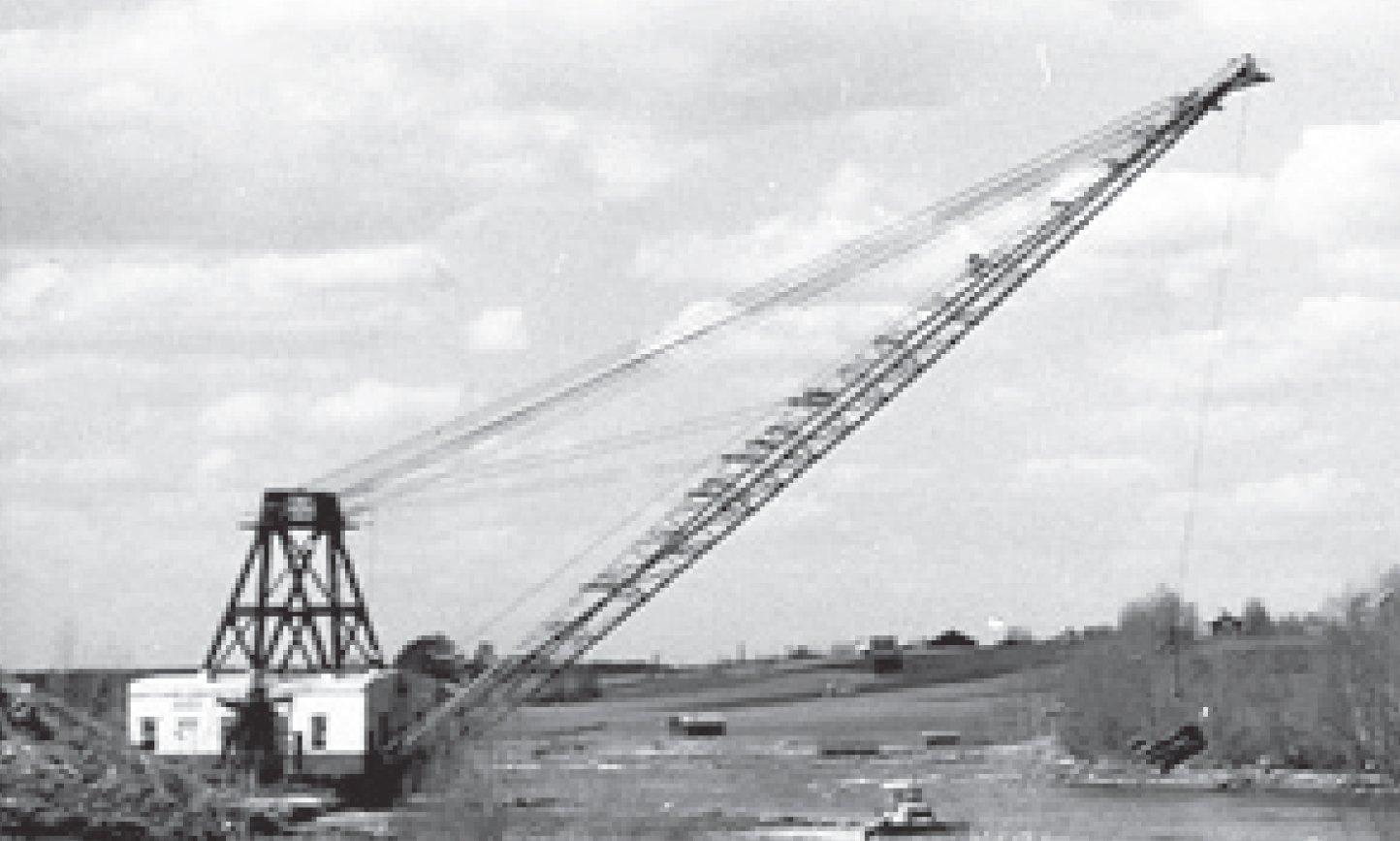Meet Marion, the mother of Aitik
It was in 1968 that Aitik in principle was born and went into operation. A major success factor for that was Marion, the mine’s ‘mother’, who throned over the Aitik mine for decades before work to finally lay her to rest began in 2019.
Marion arrived in Sweden in 1947, direct from the manufacturer in Ohio, USA. Her first job was at Vattenfall under the name CF20 (Centralförrådet 20) where she and her younger sisters worked hard on hydroelectric construction along the rivers and watercourses in Norrbotten and Västerbotten over the next twenty years.

In 1966, it was decided that she had worked long enough on the rivers. At her new home, what we today recognise as Aitik, Marion would start working in mining. The almost twenty-year-old Marion was moved from her location on the banks of the river Skellefteälven up to what would become Boliden’s Aitik mine.
For two years her stripping shovel was cast out time and time again to slowly but surely remove all the soil from the hard rock. By 1968 it was considered that enough soil had been removed, and Aitik’s mining operations kicked off with annual production of around two million tonnes. At that time it was said that there was enough ore to last for 15 years. Now, fifty years later there is talk of a further 27 years of life, at least at the moment.
With Marion’s main task, the stripping of Aitik, completed, it might seem that she had served her purpose, despite still being fully functional. So for a few years it seems that all she had to do was stand and wait. Which is exactly what she did, until what is now the old concentrator started up, and she was given a new job.
She was moved to a reserve pond, where she continued working for a good few years. It was only after 61 years in service that she finally retired, when she was taken out of production entirely in 2008. “There were a few of us who kept her running,” explains Jörgen Larsson, now a project manager at Aitik.

For Jörgen, who at that time worked in the crushers at the old concentrator, Marion was extra work that he had to do when needed. At times, there were plenty of shifts behind the controls. A great experience, despite being quite hard, according to Jörgen.
“It was a noisy environment, a lot of banging and screeching,” he remembers.
All the machinery in Marion was basically completely open. Two huge gears spun against each other with moving parts both inside and all around.
Jörgen remembers that he felt as though everything was spinning the first time he got into the machine. At the same time, it was cool that everything apart from the turn of the machine was powered by a single engine. Handling Marion’s stripping shovel required a special technique that keen anglers might recognise. Jörgen describes it as like casting an Abu Ambassadeur reel on a rod. It requires sensitivity and timing to avoid tangles. Something that he managed to escape causing himself. He was, however, asked to sort out tangles in Marion’s line by other people.
“The difference from fishing is that Marion’s line is 50 mm steel cable. In other words, not so easy to sort out,” he says.
Working with Marion was pure physical labour. The bucket was controlled with foot brakes and two levers, as well as a huge amount of instinctive feeling. It certainly wasn’t something that operators could sit doing for eight hours at a stretch.
“It was rather monotonous work, and your legs got tired from having to brake all the time. You couldn’t operate it for more than a few hours at a time. Then you had to go off and do something else,” says Jörgen.
Fortunately, there were plenty of other things to do. All the moving parts, both inside the machinery compartment and along the 64-metre boom, needed regular lubrication.
“She was an old lady, so if you wanted her to keep running, you had to take care of her,” says Jörgen.
His time with Marion ended in 2006 and two years later Marion did her last regular shift at the reserve pond. When the new plant was built and new machines were purchased, her time was past. An attempt to move her a few years later led to an electric motor breaking and she was left standing at her old workplace.
In 2019 Marion was deemed to be in such a bad condition that she had begun to pose a risk to the surrounding operations. Taking her down, renovating and moving her to another location would have been much too costly, if even practically possible. A decision was made that she would join her other Marion-sisters, all of which have long since been disassembled, and in the beginning of October 2019 dismantling of the over 70 year old machine began, effectively marking the end of an era in the history of both hydropower and the Aitik mine.
Here you can listen to the song about Marion by artist Pugh Rogefeldt.